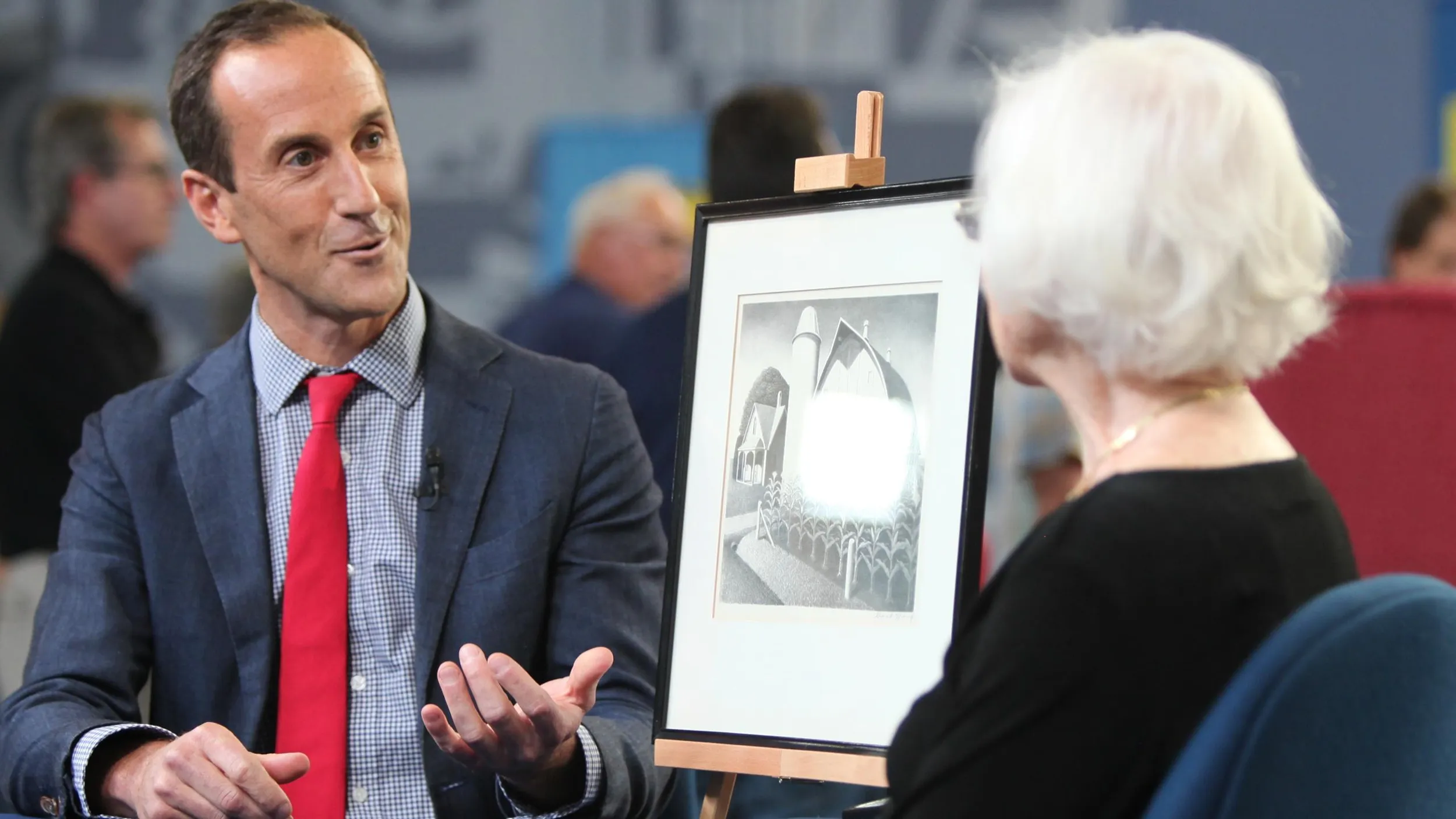GUEST: I brought an icon that I received from my father. My father got it from my uncle, who was an art dealer and collector. He passed away about 15 years ago. When he passed away, my mother was offered this icon. She was really attracted to it. She was a very religious woman. She passed away about a year ago, and my father I don't think really had that much interest in it, so he offered it to me. Other than that, I don't know anything about it.
APPRAISER: Okay. This one is a quite nice icon as far as its oklad. The oklad is the cover on the icon itself. It's the silver cover. What it depicts is Christ the Almighty or Christ Pantocrator, which is a favorite subject of Russian icons. In the left hand of Christ, he's holding the New Testament. In his right hand, he's holding up his fingers in a blessing or teaching pose. That's the typical way that Christ Pantocrator is shown. It's basically Christ being the Omnipotent. In Russian icons, the same subjects appear over and over again, and certain poses are referred to as the name of that icon. It's also written down here in enamel-- (speaking Russian)-- in Russian. So that's also, in Russian, Christ the Almighty, the Omnipotent, the All Holder. What I can also tell you about this is that it's very beautifully chased and repoussé silver. And by that, I mean if you look around the borders, the silverwork, where it's very finely done, it's chased with instruments to make impressions into it. And at the same time, you have a repoussé, which is silver hammered from the back, which is in his vestments, for example. And you also have other types of actual Russian craftsmanship that people were celebrated for, including champlevé and cloisonné enamel. Now, this is an example of the cloisonné enamel. This is where the enamel was poured into, like, a kind of a filigree-type surrounding. And then you have champlevé. That is where it's kind of flat. It's within the same plane. So you have a bunch of different styles of enamel, silver and enamel workmanship here. Do you know what time period it's from?
GUEST: I don't have any idea.
APPRAISER: Well, actually, this is fairly easy to date, at least the oklad-- again, the oklad being the cover-- because there is a date. It's actually on the bottom, right next to the hallmark. And it has an "84," which is referring to the silver purity. It's the Russian silver purity mark. And they would have an assayer's mark, which it does, and an assayer's date, which it does as well, of 1892. So that's how we can know it is from 1892.
GUEST: Okay.
APPRAISER: At least the oklad. Now, it could be that the icon itself is from a different date. But the value of this is actually going to be more in the oklad. Do you have any idea of its value?
GUEST: None whatsoever.
APPRAISER: If you had to guess, what would you think?
GUEST: A few thousand.
APPRAISER: Okay. Well, I can tell you that these are very popular now amongst Russian collectors. In a retail environment, this would be about $20,000.
GUEST: Oh my gosh. That's amazing.
APPRAISER: And I should say that that is also considering that, if you notice down here, it's missing one of the appliqués.
GUEST: Yeah, and that actually... I know when my mother got this from my aunt, it was there, because I have a photograph and I know it was there. And my father said it fell off at some point, and it's somewhere. So I think we have it, I just haven't found it.
APPRAISER: Okay, fantastic. If you can find it, that would be excellent. It is something that could be restored, it is something that could be remade, and that would bring up the value a little bit higher as well. It could be closer to $25,000 or $30,000.
GUEST: Oh my gosh, that's amazing. That is so cool.



